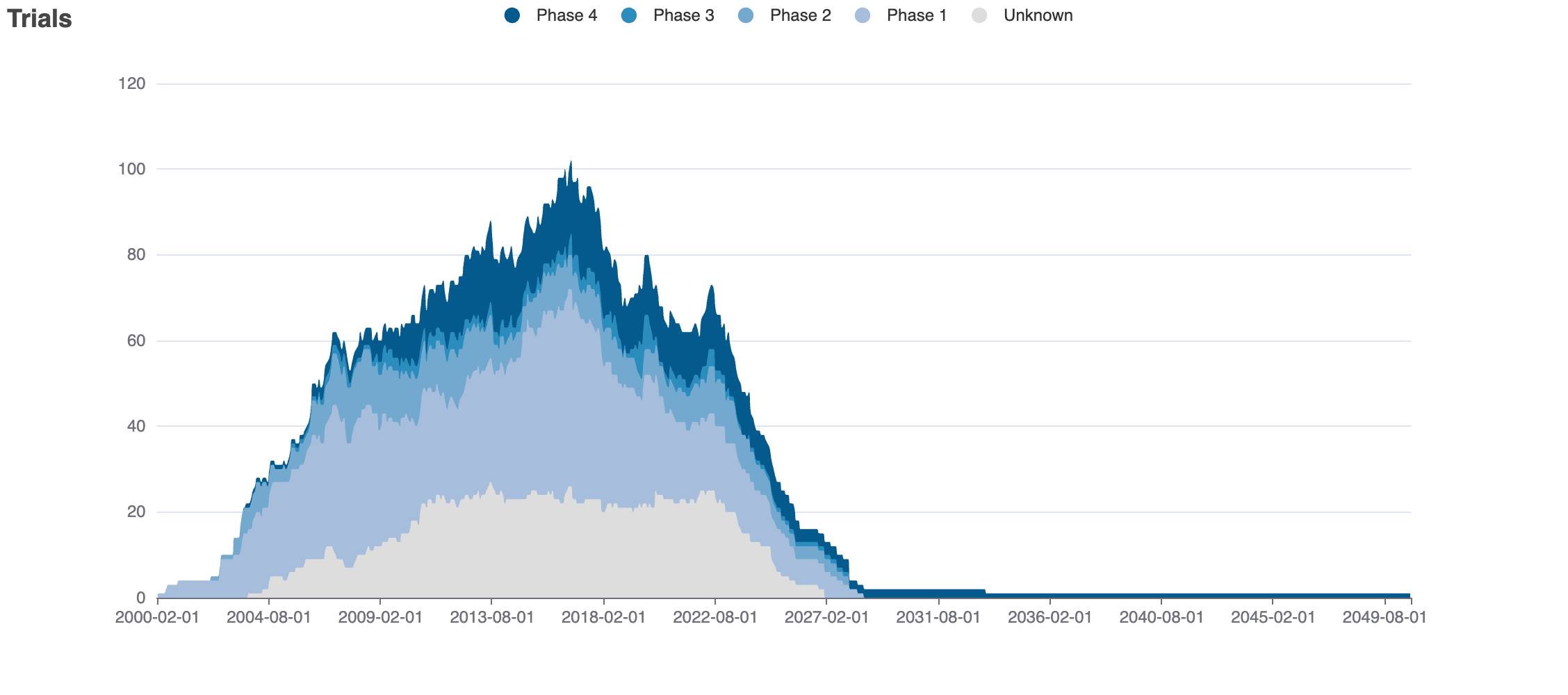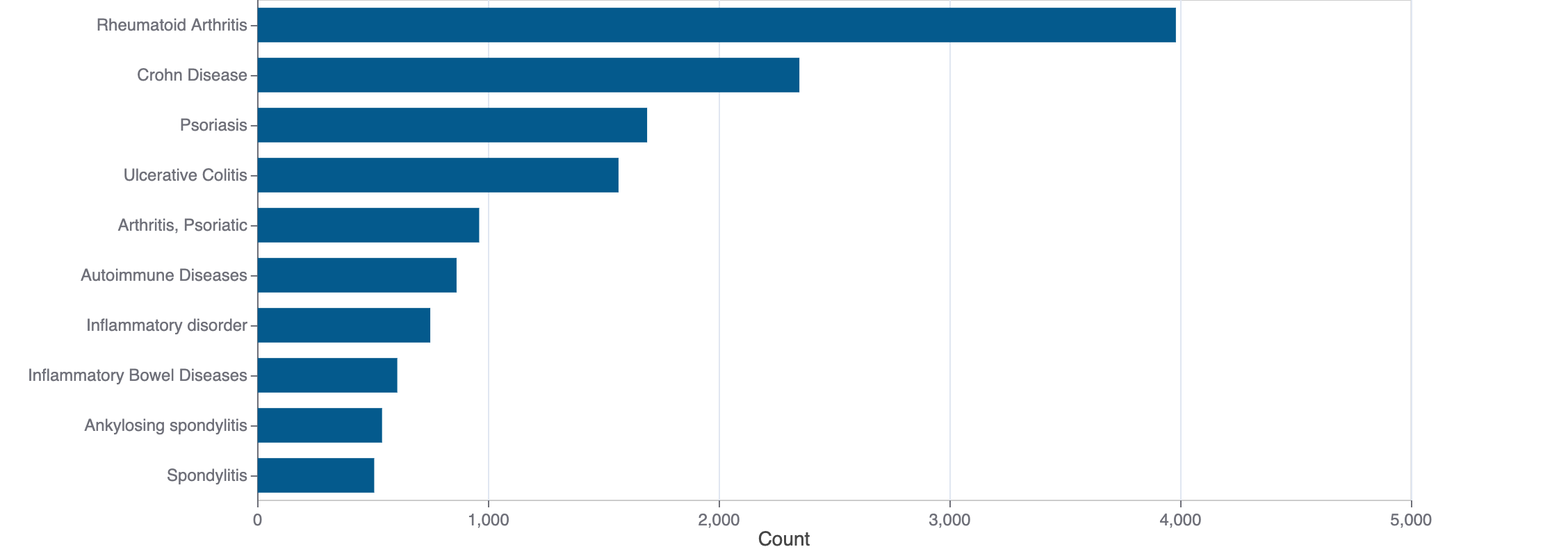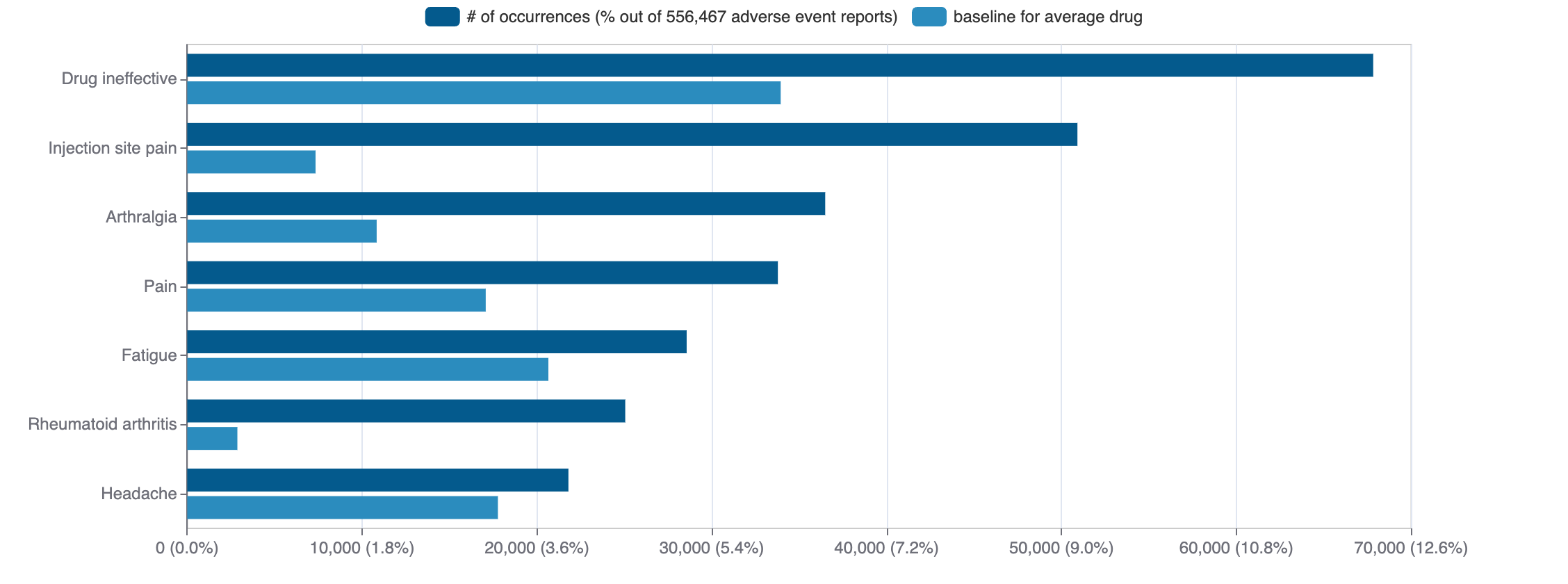Latuda(lurasidone)
Latuda (lurasidone) is a small molecule pharmaceutical. Lurasidone was first approved as Latuda on 2010-10-28. It is used to treat bipolar disorder, major depressive disorder, schizophrenia, and schizophrenia spectrum and other psychotic disorders in the USA. It has been approved in Europe to treat schizophrenia. The pharmaceutical is active against 5-hydroxytryptamine receptor 7. In addition, it is known to target alpha-2C adrenergic receptor, alpha-2A adrenergic receptor, D(2) dopamine receptor, 5-hydroxytryptamine receptor 2A, and 5-hydroxytryptamine receptor 1A.
Download report
Favorite
Top 200 Pharmaceuticals by Retail Sales
Commercial
Therapeutic Areas
Therapeutic Area | MeSH |
|---|---|
| mental disorders | D001523 |
Trade Name
FDA
EMA
Latuda (generic drugs available since 2019-01-03)
Drug Products
FDA
EMA
New Drug Application (NDA)
New Drug Application (NDA)
Abbreviated New Drug Application (ANDA)
Abbreviated New Drug Application (ANDA)
Lurasidone hydrochloride
Tradename | Company | Number | Date | Products |
|---|---|---|---|---|
| LATUDA | Sunovion Pharmaceuticals | N-200603 RX | 2010-10-28 | 5 products, RLD |
Labels
FDA
EMA
Brand Name | Status | Last Update |
|---|---|---|
| latuda | New Drug Application | 2022-07-18 |
| lurasidone hydrochloride | ANDA | 2023-06-15 |
Indications
FDA
EMA
Indication | Ontology | MeSH | ICD-10 |
|---|---|---|---|
| bipolar disorder | EFO_0000289 | D001714 | F30.9 |
| major depressive disorder | EFO_0003761 | D003865 | F22 |
| schizophrenia | EFO_0000692 | D012559 | F20 |
| schizophrenia spectrum and other psychotic disorders | — | D019967 | — |
Agency Specific
FDA
EMA
No data
Patent Expiration
HCPCS
No data
Clinical
Clinical Trials
69 clinical trials
View more details

Mock data
Subscribe for the real data
Subscribe for the real data
Indications Phases 4
Indication | MeSH | Ontology | ICD-10 | Ph 1 | Ph 2 | Ph 3 | Ph 4 | Other | Total |
|---|---|---|---|---|---|---|---|---|---|
| Schizophrenia | D012559 | EFO_0000692 | F20 | 6 | 6 | 16 | 8 | 2 | 38 |
| Bipolar disorder | D001714 | EFO_0000289 | F30.9 | — | 5 | 14 | 2 | 3 | 22 |
| Psychotic disorders | D011618 | F20.81 | — | 1 | 3 | 2 | — | 6 | |
| Mania | D000087122 | F30 | — | — | — | 1 | — | 1 |
Indications Phases 3
Indication | MeSH | Ontology | ICD-10 | Ph 1 | Ph 2 | Ph 3 | Ph 4 | Other | Total |
|---|---|---|---|---|---|---|---|---|---|
| Autistic disorder | D001321 | EFO_0003758 | F84.0 | 1 | 1 | 2 | — | — | 4 |
| Suicidal ideation | D059020 | EFO_0004320 | R45.851 | — | 3 | 2 | — | — | 3 |
| Major depressive disorder | D003865 | EFO_0003761 | F22 | — | — | 2 | — | 1 | 3 |
Indications Phases 2
Indication | MeSH | Ontology | ICD-10 | Ph 1 | Ph 2 | Ph 3 | Ph 4 | Other | Total |
|---|---|---|---|---|---|---|---|---|---|
| Asperger syndrome | D020817 | EFO_0003757 | F84.5 | — | 1 | — | — | — | 1 |
| Pervasive child development disorders | D002659 | EFO_0003756 | F84 | — | 1 | — | — | — | 1 |
| Attempted suicide | D013406 | EFO_0004321 | T14.91 | — | 1 | — | — | — | 1 |
Indications Phases 1
Indication | MeSH | Ontology | ICD-10 | Ph 1 | Ph 2 | Ph 3 | Ph 4 | Other | Total |
|---|---|---|---|---|---|---|---|---|---|
| Pharmacokinetics | D010599 | 2 | — | — | — | — | 2 | ||
| Schizotypal personality disorder | D012569 | F21 | 1 | — | — | — | — | 1 | |
| Healthy volunteers/patients | — | 1 | — | — | — | — | 1 | ||
| Metabolism | D008660 | GO_0008152 | 1 | — | — | — | — | 1 |
Indications Without Phase
No data
Epidemiology
Epidemiological information for investigational and approved indications
View more details
Drug
General
| Drug common name | LURASIDONE |
| INN | lurasidone |
| Description | Lurasidone is an N-arylpiperazine that is (3aR,4S,7R,7aS)-2-{[(1R,2R)-2-(piperazin-1-ylmethyl)cyclohexyl]methyl}hexahydro-1H-4,7-methanoisoindole-1,3(2H)-dione in which position N4 of the piperazine ring is substituted by a 1,2-benzothiazol-3-yl group. Lurasidone is used (generally as the hydrochloride salt) as an atypical antipsychotic for the treatment of schizophrenia. It has a role as an adrenergic antagonist, a dopaminergic antagonist, a serotonergic antagonist and a second generation antipsychotic. It is a 1,2-benzisothiazole, a N-arylpiperazine, a bridged compound and a dicarboximide. It is functionally related to a maleimide. It is a conjugate base of a lurasidone(1+). |
| Classification | Small molecule |
| Drug class | antipsychotic with binding activity on sertonin (5-HT2A) and dopamine (D2) receptors |
| Image (chem structure or protein) | |
| Structure (InChI/SMILES or Protein Sequence) | O=C1[C@H]2[C@@H]3CC[C@@H](C3)[C@H]2C(=O)N1C[C@@H]1CCCC[C@H]1CN1CCN(c2nsc3ccccc23)CC1 |
Identifiers
| PDB | — |
| CAS-ID | 367514-87-2 |
| RxCUI | 1040028 |
| ChEMBL ID | CHEMBL1237021 |
| ChEBI ID | 70735 |
| PubChem CID | 213046 |
| DrugBank | DB08815 |
| UNII ID | 22IC88528T (ChemIDplus, GSRS) |
Target
Agency Approved
HTR7
HTR7
Alternate
ADRA2C
ADRA2C
ADRA2A
ADRA2A
DRD2
DRD2
HTR2A
HTR2A
HTR1A
HTR1A
Organism
Homo sapiens
Gene name
ADRA2C
Gene synonyms
ADRA2L2, ADRA2RL2
NCBI Gene ID
Protein name
alpha-2C adrenergic receptor
Protein synonyms
adrenergic, alpha-2C-, receptor, Alpha-2 adrenergic receptor subtype C4, Alpha-2C adrenoceptor, Alpha-2C adrenoreceptor, Alpha-2CAR, alpha2-AR-C4
Uniprot ID
Mouse ortholog
Adra2c (11553)
alpha-2C adrenergic receptor (Q01337)
Variants
Clinical Variant
No data
Financial
No data
Trends
PubMed Central
Top Terms for Disease or Syndrome:

Mock data
Subscribe for the real data
Subscribe for the real data
Additional graphs summarizing 2,038 documents
View more details
Safety
Black-box Warning
Black-box warning for: Latuda, Lurasidone hydrochloride
Adverse Events
Top Adverse Reactions

Mock data
Subscribe for the real data
Subscribe for the real data
7,789 adverse events reported
View more details
Premium feature
Learn more about premium features at pharmakb.com
Learn more
